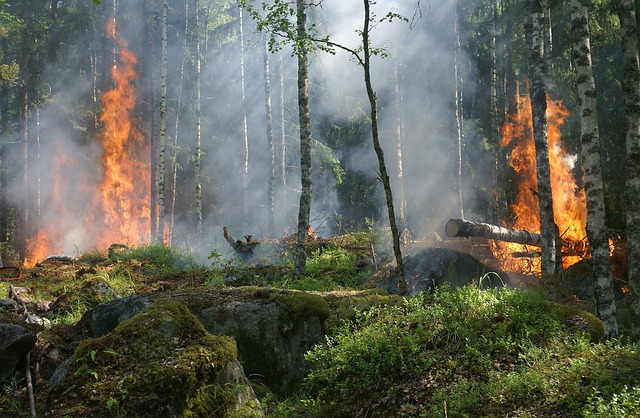Selling Your House After a Fire in California: A Comprehensive Guide
Selling a home damaged by fire in California requires strategic planning. Assess damage and insuranc…….
In the aftermath of a devastating fire, homeowners in California often find themselves facing the daunting task of rebuilding their lives and properties. Among the many challenges they encounter, selling their damaged homes stands out as a complex yet crucial decision. This article delves into the intricate process of selling a house after a fire in California, offering valuable insights for both property owners and real estate professionals navigating these unique circumstances. By exploring various aspects, from legal considerations to market trends, we aim to equip readers with the knowledge necessary to make informed choices during this trying time.
Definition: Selling your house after a fire in California refers to the process of disposing of a residential property that has been partially or entirely damaged by a fire event. This can include homes requiring repairs, rebuilding, or complete demolition and reconstruction.
Key Components:
Assessment: The initial step involves assessing the extent of damage caused by the fire. This comprehensive evaluation determines if the home is repairable or requires significant renovation efforts. Structural engineers and certified appraisers play a vital role in this process.
Insurer Involvement: Homeowners’ insurance policies typically cover fire damage, but the payout amount may not fully offset the cost of repairs. Understanding coverage, filing claims, and negotiating with insurers are critical aspects of the selling decision.
Legal Proceedings: Selling a fire-damaged property involves legal formalities, including obtaining permits, ensuring compliance with building codes, and potentially dealing with complex insurance policies and legal agreements.
Historical Context:
California has a long history of wildfires, making the process of selling damaged homes an integral part of the state’s resilience strategy. Over time, regulatory frameworks have evolved to streamline the reconstruction and sale process, ensuring that communities can recover more effectively after natural disasters. For instance, the California Building Code provides guidelines for rebuilding after fires, addressing structural integrity, fire safety, and accessibility.
The concept of selling homes after a fire has global implications, with varying approaches and outcomes across different countries:
North America: The United States and Canada have well-established real estate markets with robust frameworks for handling damaged properties. In California, the process is further refined by state-specific regulations and a deep understanding of local real estate dynamics.
Europe: Some European countries have unique traditions regarding property ownership and reconstruction after disasters. For instance, in Germany, strict building codes and generous insurance coverage often lead to thorough rebuilding efforts, ensuring properties meet modern safety standards.
Asia Pacific: Countries like Australia and Japan have faced significant wildfires and earthquakes, prompting the development of resilient building practices. Their real estate markets incorporate specific considerations for post-disaster property sales, reflecting local experiences and cultural norms.
The California real estate market, known for its diversity and vibrancy, can present unique challenges when dealing with fire-damaged properties:
| Region | Market Tendency | Impact on Sales |
|---|---|---|
| Urban Centers (e.g., Los Angeles, San Francisco) | High demand, limited supply | Damage to high-value properties can create a temporary glut in the market, affecting prices |
| Suburban Communities | Stable growth | Fire-damaged homes may attract buyers seeking opportunities for renovation and rebuilding |
| Rural Areas | Varies | Depends on local infrastructure and community support; remote areas might face longer recovery times |
Investors play a significant role in post-fire real estate markets, offering both opportunities and challenges:
Opportunities: Investors can provide capital for rebuilding projects, accelerating the recovery process. In some cases, purchasing damaged properties at discounted rates allows them to profit from successful renovations and resales.
Challenges: Speculative buying after fires can drive up prices, making it harder for original homeowners to rebuild or sell at reasonable costs. This dynamic requires careful monitoring and regulatory interventions to protect vulnerable communities.
Selling homes after a fire is integral to California’s economic system, contributing to:
Technology plays a pivotal role in modernizing the process of selling fire-damaged homes:
Virtual Reality (VR) and Augmented Reality (AR): These immersive technologies enable potential buyers to virtually tour damaged properties, providing a realistic experience without physical access. This is particularly useful for out-of-state buyers or those unable to visit in person.
Drone Technology: High-resolution drones capture detailed aerial footage of fire-damaged homes and surrounding areas, offering a bird’s-eye view crucial for assessment, marketing, and insurance claims.
Online Marketplaces: Specialized real estate platforms cater specifically to the sale of damaged properties, connecting homeowners with investors and developers worldwide. These digital marketplaces streamline the listing process and provide global exposure.
Selling a fire-damaged home involves navigating various legal requirements:
Permits and Zoning: Obtaining necessary permits for rebuilding or demolition is essential to comply with local zoning regulations.
Insurance Claims: Homeowners must navigate complex insurance policies, file claims, and potentially deal with negotiations regarding compensation for damage.
Legal Agreements: In some cases, selling damaged property involves legal agreements with buyers or developers, ensuring all parties’ rights and responsibilities are clearly defined.
Environmental Regulations: Depending on the extent of damage, there may be environmental considerations, especially if hazardous materials require removal or cleanup.
Renovation as a Selling Point: Many buyers are attracted to the idea of purchasing a home with renovation potential, seeing it as an opportunity for customization and value creation.
Green Building Practices: The rise of eco-conscious buyers has led to increased demand for homes incorporating sustainable and energy-efficient features, even in post-fire reconstruction projects.
Transparent Communication: Openly disclosing the extent of damage and potential renovation needs builds trust with buyers and helps set realistic expectations.
Professional Assistance: Engaging experienced real estate agents, appraisers, and legal professionals can streamline the selling process, ensuring compliance with regulations and maximizing property value.
Marketing Innovation: Utilizing cutting-edge technologies like VR/AR and drones enhances marketing efforts, attracting a broader pool of potential buyers.
Selling a fire-damaged home is not just a transaction; it’s an integral part of community recovery:
Neighborhood Support: Local communities often play a crucial role in helping homeowners navigate the selling process, providing emotional support and practical assistance during rebuilding efforts.
Government Initiatives: California’s state and local governments offer various programs to assist homeowners after fires, including financial aid, temporary housing solutions, and grant opportunities for rebuilding projects.
Community Development: Successful sales of fire-damaged homes contribute to the overall recovery and revitalization of affected areas, fostering a sense of resilience within the community.
Selling your house after a fire in California is a multifaceted process that demands careful consideration of legal, economic, technological, and emotional factors. By understanding these aspects and staying informed about market trends, homeowners can make well-informed decisions during this challenging time. As California continues to face the impacts of wildfires, a robust and compassionate real estate community will play a vital role in helping residents rebuild their lives and communities.

Selling a home damaged by fire in California requires strategic planning. Assess damage and insuranc…….

After a fire in California, homeowners planning to sell must understand the vital fire damage restor…….

After a house fire in California, a professional assessment is vital to determine visible and hidden…….

Selling a home after a fire in California necessitates a multi-step process, including assessing dam…….

Selling a fire-damaged home in California requires a structured approach. Start with a comprehensive…….

Selling your home after a fire in California demands strategic planning. Document damage accurately,…….

After a devastating fire in California, navigating the housing market requires understanding repairs…….

Post-fire California real estate presents unique opportunities for investors. To succeed, investors…….

Selling your home after a fire in California requires strategic planning and expert guidance. Hire a…….

California real estate investors facing post-fire market challenges should start by assessing damage…….